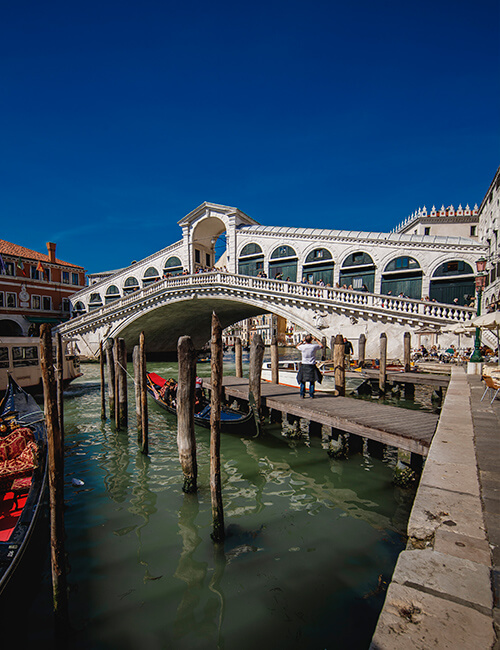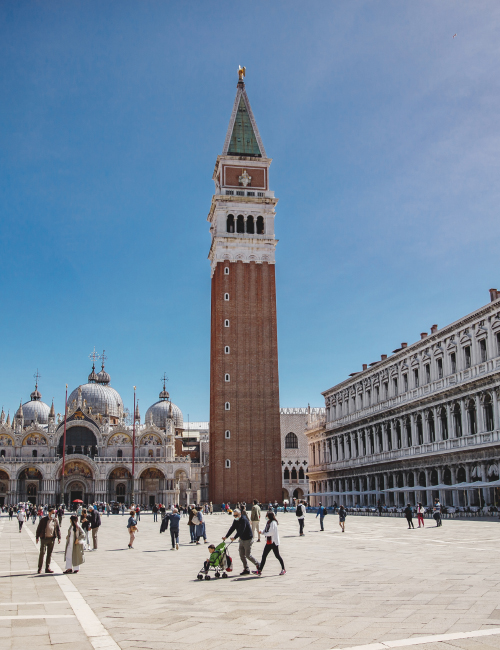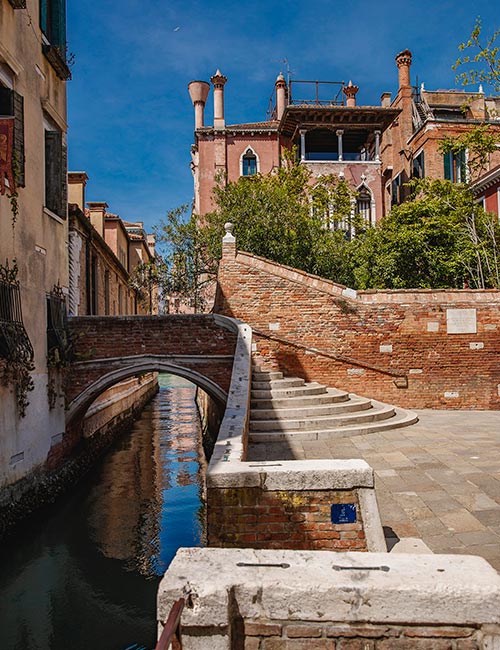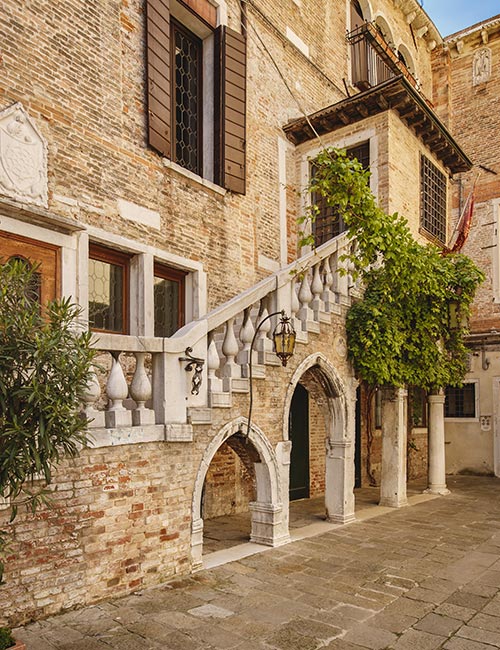Mysterious Venice: the Angel of the North
All our experiences are included in the ticket!
What to see in Venice in one day? Discover with us the secrets of the city with the Angel of the North walking tour: an audio guide will accompany you across the lesser known Venice streets. You will come across stones, engravings and reliefs that testify to events that have marked the history of the city.
From Rialto Bridge we will go together to Campo Sant'Angelo; with this tour you will be able to reach the heart of the city crossing little-known streets and squares off the beaten track, listening to ancient legends and admiring the traces of churches and palaces of the past that no longer exist today.
Let us guide you on this unusual Venice secret itinerary, created for Venetiana by Alberto Toso Fei: you will not be disappointed!
What to see in Venice in one day? Discover with us the secrets of the city with the Angel of the North walking tour: an audio guide will accompany you across the lesser known Venice streets. You will come across stones, engravings and reliefs that testify to events that have marked the history of the city.
From Rialto Bridge we will go together to Campo Sant'Angelo; with this tour you will be able to reach the heart of the city crossing little-known streets and squares off the beaten track, listening to ancient legends and admiring the traces of churches and palaces of the past that no longer exist today.
Let us guide you on this unusual Venice secret itinerary, created for Venetiana by Alberto Toso Fei: you will not be disappointed!
Suggested itinerary:
Rialto Bridge
Our itinerary begins beyond Rialto Bridge on the side of the market, the historic and mercantile heart of Venice, the place where - according to the legend - the city was founded with the construction of the small church of San Giacomo, on 25 March 421. Rialto Bridge is the oldest of the four bridges that cross Venice Grand Canal, built between 1588 and 1591 to a design by Antonio Da Ponte to replace a previous bridge, which had collapsed and was rebuilt several times. Its name derives from "Rivus Alto" (deep canal), as at this point of the canal the banks were higher and the whole area was protected from rising tides. The bridge structure consists of two inclined ramps joined in the center by a portico.
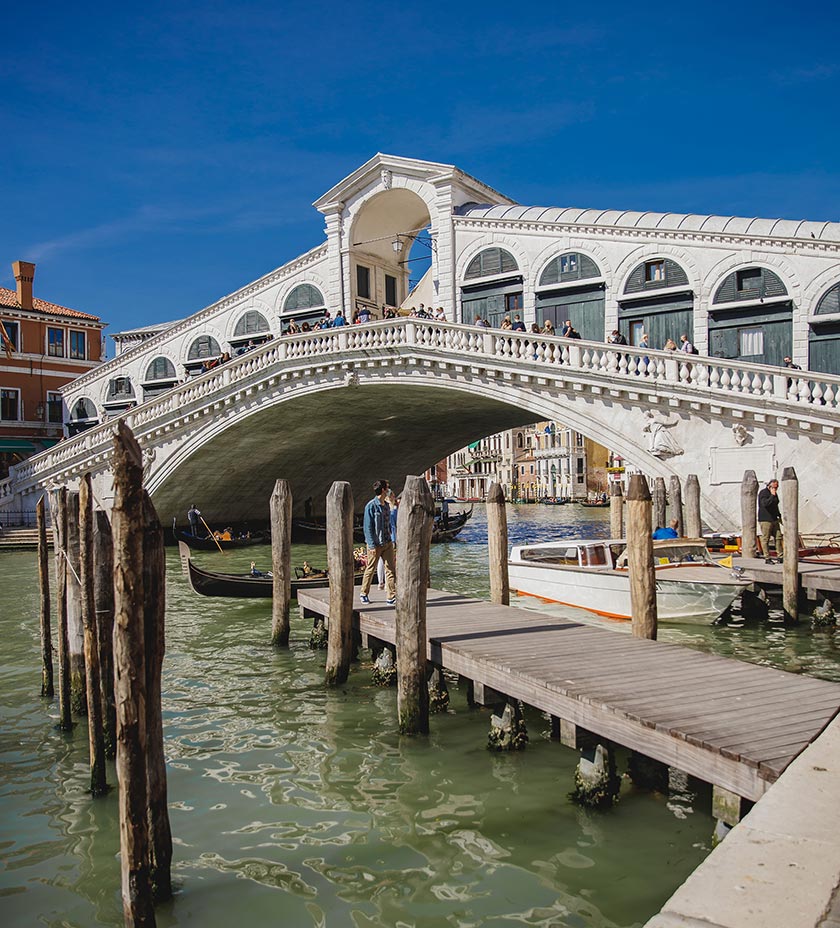
Campo San Salvador
After crossing Rialto Bridge and taking Calle Larga Mazzini you will come to Campo San Salvador, where once there was a tree to which horses had to be tied. Horses were in fact the main means of transport to move around the city. A decree dated 29 February 1287 forbade riding the streets around the area on horseback. There was also a well to water the horses. Today, here you can admire the ancient Church of San Salvador, and the nearby cloister. In the campo there is also a commemorative column of Venice riots occurred in 1848-1849.

Lovo Bridge
To the right of Campo San Salvador opens Calle del Lovo, a street paved in marble, which leads to the bridge of the same name. Ponte del Lovo, or Lovo Bridge, is a small arched structure, and it is the only bridge from which St. Mark's bell tower can be clearly seen. The name derives from Lovo, the name of an ancient and very influential Venetian family. But Lovo also means "wolf" in Venetian dialect: once upon a time, in fact, it was not unusual to find wolves at the edge of the lagoon.

Corte del Teatro
Once you have passed Ponte del Lovo, go straight to Calle del Teatro o de la Comedia: take a few steps on your right and you will see the facade of the Goldoni Theater. At the corner of the theater there is a narrow street that leads to Corte del Teatro. At number 4063, looking up, you will recognize among the friezes a small head of an ancient woman: according to tradition it is the head of the "old woman" of San Paternian. According to a Venetian legend, an elderly woman who lived nearby used to hide her money in the lining of an old coat kept in the attic. One day her son gave her coat to a poor indigent. The woman, having discovered what her son had done, promised him, if he recovered the coat, to bequeath all the money he had hidden there. The son then, disguised as a beggar, met the poor fellow on Rialto bridge and gave him his thick and warm coat in exchange for the other. With the money recovered, the son opened a pharmacy, still called the "Old Woman" today, and had the statue of his mother affixed to it. The head that can be admired today in Corte del Teatro is what remains of the sculpture.

Campo San Luca
Turning around the building with the head of the old woman and taking Calle del Forno, you will arrive at Campo San Luca. Here you will notice a flagpole in Istrian stone dating back to 1310 in memory of the victory of Doge Bartolomeo Gradenigo against the conspirators led by Bajamonte Tiepolo. Together with Campo San Bartolomeo, Campo San Luca has been for a very long time one of the most popular meeting points for Venetian citizens thanks to its central location.

Ca' Loredan
At one corner of the campo opens Calle Carbon, which leads to the Grand Canal. Here, after turning the corner to the left, you will find yourself in front of Ca 'Loredan, the seat of the Municipality of Venice. Looking at the second column on the left you can recognize the graffiti of a man with a long pipe dressed in seventeenth-century clothes. According to popular tradition, it depicts a man named Biagio, who loved to stop on the banks of the Grand Canal in the evening and smoke his pipe. One day an extraordinary event happened: under a gondola the water turned red and opened, leaving the boat suspended in the void. The gondolier jumped into the water and swam away. Two black arms emerged from the water (the arms of Satan, no doubt!) attempting to grab the gondola. Only then did Biagio realize that the boat was hosting two little girls. He then shouted to the devil to take him instead of the girls, but the devil mockingly replied that he would only do so if the man was able to embrace the whole world. Biagio's arms then flew off his body, escorted by a host of angels: Satan immediately abandoned his purpose and the girls were saved.

Campo Manin
Going along Riva del Carbon and turning into Calle Cavalli you will reach Campiello de la Chiesa and the branch of La Salizzada. You will then find yourself in Campo Manin, a large, centrally located square, one of the most famous in the city. On one side of the campo stands the modern building of the Cassa di Risparmio di Venezia, where the prestigious Aldina Academy once stood, founded in 1494 by the Venetian printer Aldo Manunzio to promote the printing of Latin, Greek and Italian classics. In the center of the field stands the monument dedicated to Daniele Manin, a famous Venetian patriot. The field also housed the Church of San Paternian, which was demolished by Napoleon.

Campo San Beneto
After passing Ponte San Paternian and continuing along the next street of the same name, you will come out in Salizada de la Chiesa or del Teatro. Turning right, continue to Campo San Beneto, a somewhat hidden place, usually overlooked by normal tourist routes. On one side you can admire the Fortuny Palace, while on the other you can see the back of Palazzo Volpi di Misurata and the facade of San Beneto Church. In the center stands a fountain.

Campo Sant'Angelo
From Campo San Beneto now take Calle Pesaro and Calle Michiel. Turn left into Calle degli Avvocati and you are in Campo Sant'Angelo, the end of this Venice walking tour. Have fun looking in the pavement for a plaque showing where once stood the church dedicated to the Archangel Michael, which gives its name to the whole area, demolished in the nineteenth century during the Napoleonic suppressions. Here you can see Palazzo Trevisan Pisani, Palazzo Gritti Morosini, Palazzo Duodo and the monastery of Santo Stefano. Finally, there are also two 15th century wells and the small Oratory of the Annunziata, with five stained glass windows from Murano.



